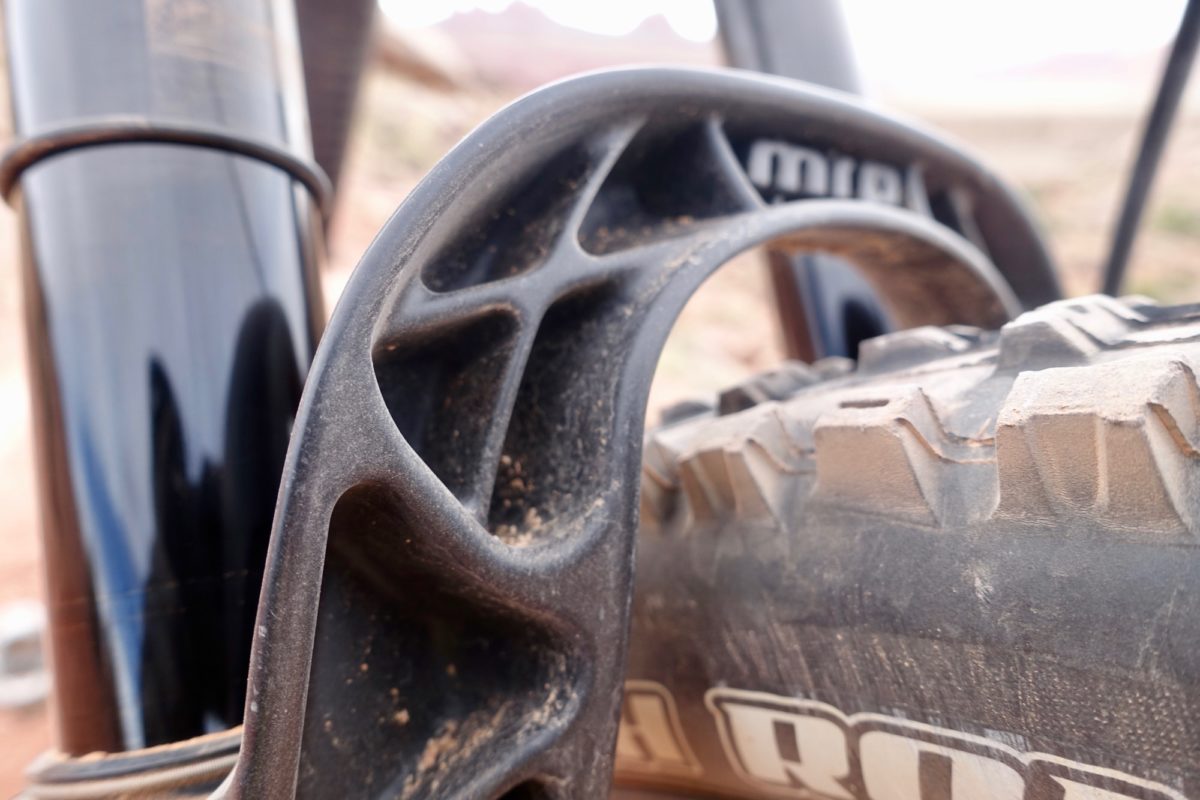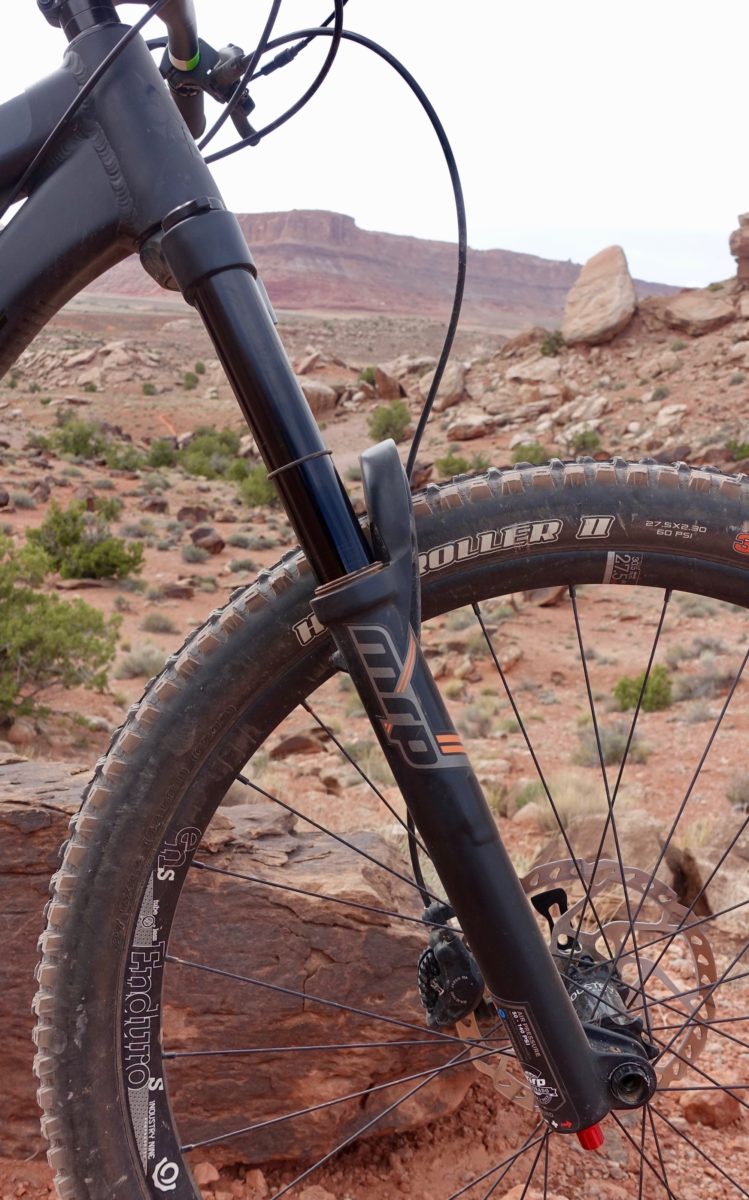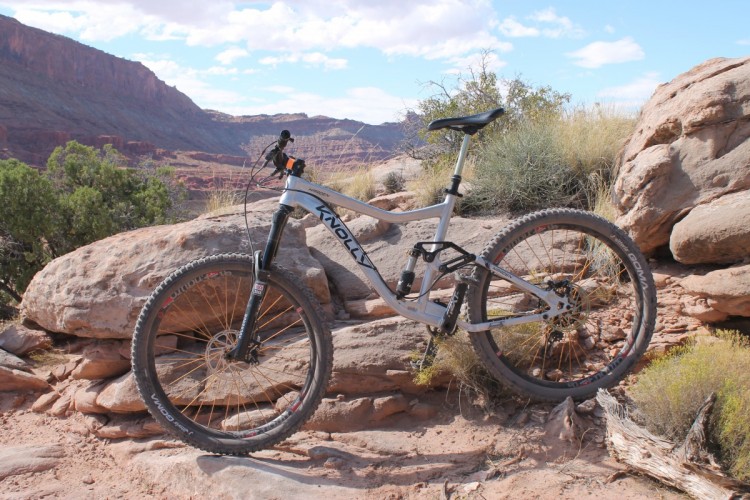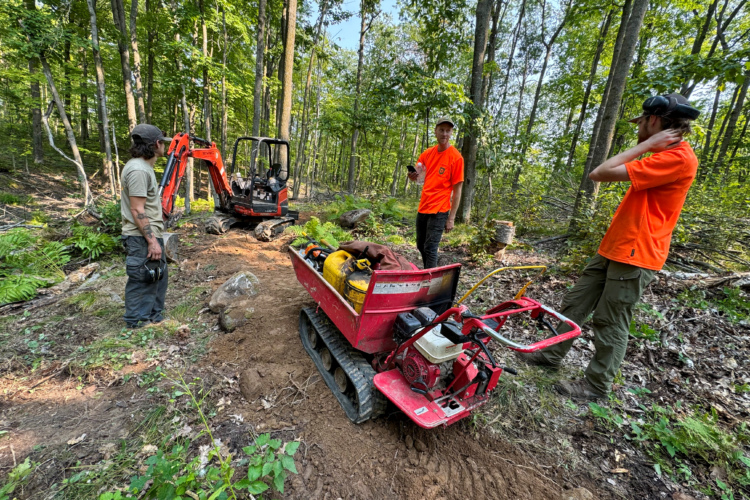
MRP’s newest fork, the Ribbon, is a literal head turner thanks to its reverse arch design.
According to the MRP website, this is an “outcast arch design with forward-facing weight reliefs to mitigate mud build up and deliver a distinctive look.” The basic idea is that due to the spin of the tire, mud is always kicked up in such a way that it hits the back of the arch, thereby collecting and adding weight on standard forks. With this design, the support struts are placed on the opposite side so that they don’t collect mud.
That, and the design just looks bad ass.
In addition to the unique arch, the Ribbon is packed with a slew of new features intended to set it apart from–and ahead of–the competition. The bladder-free damper has been improved over their Stage fork, with a low-pressure IFP. MRP has also added separate positive and negative air pressure chambers for greater tunability.

A unique pressure relief valve has also been added to the backside of the fork to bleed off excess air pressure from radical elevation or temperature changes. This valve doesn’t actually change the air pressure in the positive and negative chambers, but rather the pressure within the lowers of the fork. Increased pressure within the lowers themselves can radically change how the fork performs and ramps up, essentially causing it to feel much stiffer. I recently experienced this change in internal fork pressure in my Fox 34 when going from 8,500ft in Colorado to 1,300ft in Arkansas, and had to re-do my sag settings and air pressures. With the new Ribbon, I could have just hit the pressure relief valve and been ready to roll! This valve is also useful for extended descents or DH laps where the repeated cycling of the fork heats up the internals.

While the Ribbon does provide standard compression and rebound controls, the most interesting feature is the 16-position Ramp Control knob. This knob controls how quickly the fork ramps up off the front end of the stroke. Set to the stiffer position, the fork will feel like it almost has a platform before it engages. Set to the softer position, and the fork will have excellent small bump responsiveness. But of course, the beauty of this feature is that you can play with it and set it exactly how you want it.
The stanchions measure 35mm in size, and the hub spacing is Boost 110mm. The fork is available in both standard 27.5″ and 27.5+/29″ platforms. In the 27.5″ platform the travel is internally adjustable from 140mm-170mm in 5mm increments, and in the 29″ platform its adjustable from 120mm-160mm.
Claimed weight is 4.15lbs for 27.5″ and 4.2lbs for 29″. MSRP in the US is $989.
First Impressions
I had the opportunity to take the Ribbon for a brief spin at Outerbike while mounted up to the Banshee Rune, and while my ride was much too brief to do a full analysis or to play with the various settings, it was great to get a quick taste of the fork above and beyond the press release.
Noah Sears of MRP set up the settings for me, and placed the Ramp Control in the middle position. With these stock settings, I found the Ribbon to offer an intuitive and forgiving ride quality. The platform was relatively stable while pedaling (without adjusting any compression settings), and it was pretty plush and responsive to hits.
If I had more time with the fork I might experiment with a more plush Ramp Control setting for a more responsive beginning stroke, and adjust my air pressure chambers to provide more ramp up and bottom-out protection at the end of the stroke. And that’s the precise beauty of this fork–with these various adjustment, the Ribbon offers an uncommon level of tunability. Granted, for the average consumer some of the settings may be a bit too complex, but this isn’t the type of fork you’ll ever see as a stock spec on an entry-level or even mid-level mountain bike.
























3 Comments
Apr 4, 2017
Apr 7, 2017
But then for me, I'm also not fast enough to give a rip about whether or not I lost a few seconds to my fork not being aero enough :)
Apr 4, 2017